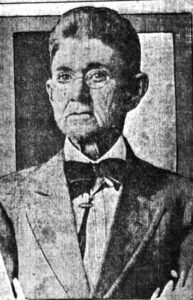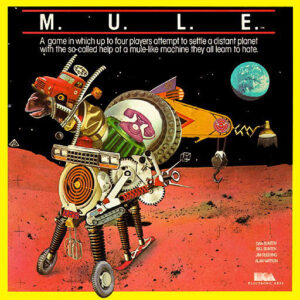calsfoundation@cals.org
Points of Pride: Identity and Language
June is Pride Month, the perfect time to talk about gender and orientation. I’m excited we live in a time and place where people are increasingly allowed to explore the gender identity and orientation that suit them, with the freedom to try things on and see what feels right, what rings true. Personal identity is just that—super personal! While many people are giddy to announce their gender and orientation to the world (Hi, I’m Jobe, she/her, and I’m bisexual!), others consider this type of information “none of anyone’s business.”
Here at the CALS Encyclopedia of Arkansas, we’re always reviewing and updating our information, language, and category designations to stay as current and accurate as possible (see our evolving editorial policies here). We currently have the option to search for entries on people by male or female, white or Black. I started to wonder if we could add “trans” as a searchable gender option. What about orientation? I know that “trans” would apply to only a few entries so far, but it would give readers one more way to search.
As for orientation, if we were going to apply this to ALL the entries on people already online (2,230 last I counted), most people would have to be “assumed straight” or “straight-presenting,” or the categories would have to be weirdly overlapped, like “straight or bisexual” if the person had biological children. Could it just be an optional category left blank most of the time, with an indicator added only if that person announced their gender or orientation publicly?
It really boils down to a question of accuracy: What can we do in cases where we’re discussing historical figures and we don’t have the luxury to simply ask the person how they identify?

Let’s take, for example, the Arkansas case of Dr. M. V. Mayfield. This person lived as a man in Mena in Polk County for years, even marrying (women) twice. Then Mayfield got sick, and suddenly the world discovered that Mayfield was born with female sex characteristics. The story came out that Mayfield had been dressed and addressed as a boy during childhood in England. So, was Mayfield what we would now consider to be a trans man? Or was Mayfield perhaps a lesbian, living in a time when it was dangerous to be out as a gay woman? The point is that we can’t know for certain how Mayfield would want to be identified. We only know that, according to expressed wishes, Mayfield was buried in a suit.
Another issue is that, while some people’s orientation or gender identity remains stable over time, for other people it’s a journey. It’s been in national news that comedian Eddie Suzy Izzard recently adopted feminine pronouns after a lifetime of identifying as a straight transvestite male. What does this mean for her gender and orientation? Should we presume that she has transitioned from a straight cross-dressing man to a gay trans woman? Likewise, former Olympic track star Caitlyn Jenner first wanted to use her new feminine name while maintaining traditionally masculine pronouns. Then she came out as a trans woman and stated that she wanted to be identified with female pronouns.
Danielle Bunten (Dani) Berry, an Arkansan in the early video-gaming industry, lived most of her life as a man; she didn’t come out as a trans woman until late in her life. Our encyclopedia entry had previously been worded to refer to Dani Berry as a boy/man during the time that she lived as a male. But we re-worded this entry, because we learned that the most respectful way to speak about a trans person’s past is to refer to that person the way they identify throughout their lives. We state the legal name on her birth certificate (historical fact), but we use her chosen name and pronouns.

Here’s another Arkansas example. Diana Rivers is an author who married a man, had a son, got divorced, and later had female partners. Is Rivers bisexual, having had relationships with both men and women? Or is Rivers gay, having come out only later in life? In her case, we know she’s a lesbian, because she told us so—and she’s still alive to ask. But in how many countless historical cases has a potentially gay person lived a heterosexual-presenting life? Unfortunately, in the case of historical figures, we can’t just ask them. We can state facts, such as who they married or who they had relationships with, if they were recorded. We can refer to anecdotal details of their lives, but we can’t know how they felt or how they might’ve answered such questions as: what is your gender? what is your orientation?
And that’s probably one of the most complicated issues: a straight-presenting marriage and biological children are not proof of orientation. Many LGBTQ+ people have married opposite-gender partners and had kids. We don’t really know how many historical figures weren’t straight, and it would be more damaging than helpful to label them “appeared straight,” or whatever the category might be. Marriages and children are historical facts we can be certain of; gender and orientation, in most cases, are conjecture. As much as I’d love to add these features to the searchable category options on the CALS EOA, we don’t know enough to do so in an effective and accurate way.
What we can do is make sure that those individuals who identify as LGBTQ+ have that indicated in their entries so that kind of information is more searchable. And the more LGBTQ+ Arkansans we include, the better our representation will be. If you know of an LGBTQ+ historically or culturally significant figure from Arkansas or who spent significant time in Arkansas, you can suggest that person for inclusion in the EOA. You can even volunteer to write the entry. I’ll be waiting for your email!
By Jasmine Jobe, editorial assistant for the CALS Encyclopedia of Arkansas and programmer for the CALS Writing Circle



